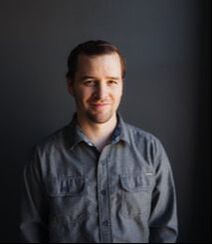ASSAY: A JOURNAL OF NONFICTION STUDIES
7.2
7.2
|
In 1981, Maxine Hong Kingston’s book, China Men, won the National Book Award for Nonfiction, and yet, many scholars argue that it isn’t nonfiction. Many of her critics argue that the use of fictional techniques led her writing beyond the reality of fact and into the realm of fiction. This debate stems from a singular approach to what creative nonfiction entails; all too often the assumption of a nonfiction text is that it is entirely provable and includes only identifiable facts. However, I want to make the case that Kingston used the lyric essay and its techniques, which, in the case of China Men, allows the writing to become a sort of counterpoetic to the mainstream ideas of Chinese immigrant history in America.
Generally, the term counterpoetic is used to describe a text or literature that works to redefine or reevaluate conventional ideas towards history. In many cases, counterpoetics have become a tool for decolonial writers to address the reality of facing a flood of canonized Western philosophies. Too often history is painted from a Euro-centric position that limits the reality of time, place, and experience felt by minority groups. So, when I refer to a “counterpoetic,” I am referencing a tool that is used to redefine, reframe, and build perspectives that encompass a broader vision of history. In many ways this is similar to the way counter-narratives function. The beauty of the lyric essay is that it clearly inhabits a zone between the hard facts of reality, and the truth of a story; its liminality lends itself to writing from the margins of society. By borrowing techniques from other genres the lyric essay doesn’t become fiction or poetry, but it does show that there is truth beyond the lines of general nonfiction. The lyric essay’s liminality, then, not only can act as a counterpoetic to experience, but also as a counterpoetic within nonfiction. It does this by opening up the genre of nonfiction to diversity of voice and experience; instead of holding to strict lines of genre—this belongs here, that goes there—it takes particular techniques that would normally be associated with other genres and brings them into nonfiction as way of recontextualizing the truth of experience. In order to be a counterpoetic, and not simply a lyric essay, a text must reorient perspectives and conversations about the pre-existing perspectives of history. Most of the time, this reorienting is subtle and hidden within the family mythology of China Men. This reorienting of perspective also most often comes in brief snippets enmeshed in the experiences of Kingston’s forefathers, rather than being large moments of focus. For example, the grandfather who immigrated to find wealth and build the railroad in California, often refers to white men as demons (128). At the same time, this grandfather is full of character and wit, and goes from moment to moment fully embodied as an individual. This dehumanizing of white people by calling them demons, and the characterization of the grandfather is a reversal of American Imperialistic practices. Most often, when referring to the historical significance of the railroads being laid across the country, it is the thousands of Chinese migratory workers that were overlooked, dehumanized, and grouped together as a faceless and disembodied people. The reversal, or reorientation, then, creates a counterpoetic in the sense that it scrutinizes the usual way that the Chinese workers were overlooked. Yunte Huang first introduces the concept of counterpoetics, in regard to transpacific literature, in his book “Transpacific Imaginations: History, Literature, Counterpoetics.” He focuses on the idea that counterpoetic literature shifts the perspective of history and temporality away from the “imperial visions that always claim some version of historical teleology as their raison d’etre, such poetics hovers between the literal and the metaphoric, the historical and the mimetic” (4), which fits nicely into the reality of how China Men is functioning as a text: Kingston uses the example of her family (specifically the men, particularly her father), time and place, mythology, textualization of laws, and personal experience to speak about the reality of Chinese immigration to the United States in contrast to the picture of immigration that is standardized history. The argument towards China Men fitting into the lyric essay form and acting as a counterpoetic hinges on two distinctions: first, that the lyric essay lies on the fringe of the mainstream canonical interpretations of the nonfiction genre; second, because the lyric essay lies on the fringe of the genre, it allows for alternative voices and approaches to the genre. By its very nature, a lyric essay bends the expectations of nonfiction. This liminality, and application of genre-bending techniques allows the lyric essay to act as a form of counterpoetics, which in turn, allows the lyric essay to function as a natural expression of marginalized viewpoints by minority groups. Yunte Huang writes in “The Transpacific as a Critical Space,” “I use counterpoetics to describe a host of marginalized poetic/historiographical practices: antiquarianism, collection, local history, anecdotes, family genealogy, travel writing, graffiti, correspondence, fantasies, and hoaxes” (4). Many of these “marginalized practices” are found among the techniques that the lyric essay implements to create its liminality. In this sense, the lyric essay itself becomes a kind of counterpoetic to the genre of nonfiction writing, as well as a tool to be used to shift historical perspective. By applying this lens of the lyric essay acting as counterpoetic to Maxine Hong Kingston’s China Men, N. Scott Momaday’s The Way to Rainy Mountain, and Karen Tei Yamashita’s Letters to Memory it becomes apparent how each of these texts use a variety of methods to shift the genre of nonfiction toward alternative perspectives on mainstream American history.
|

